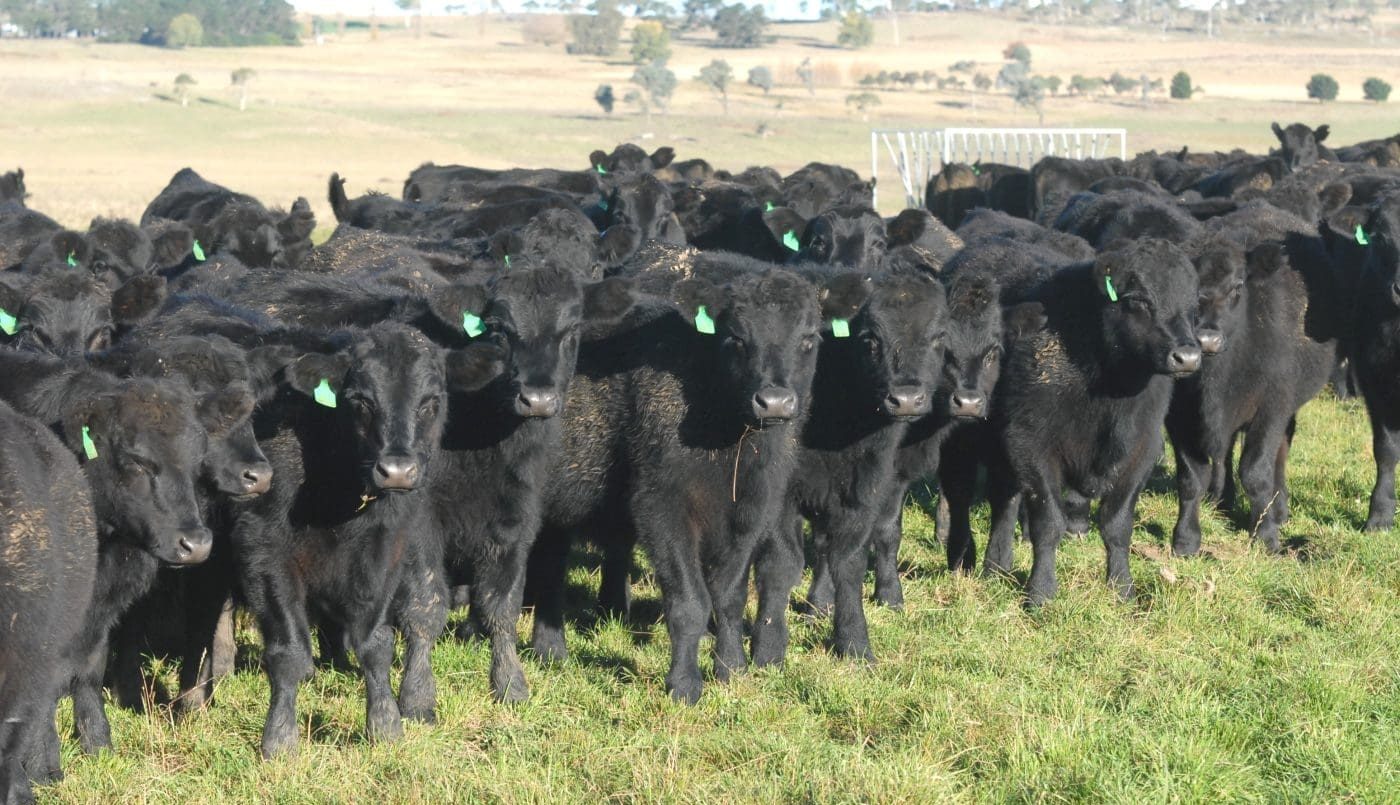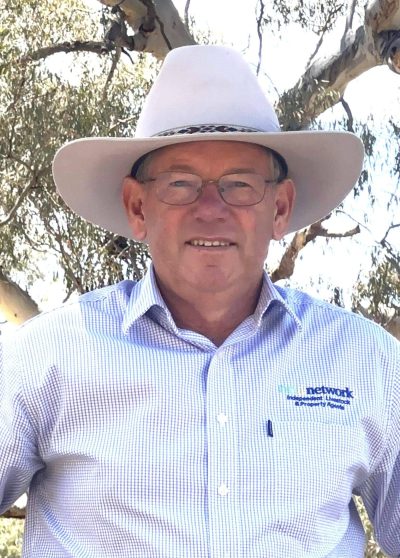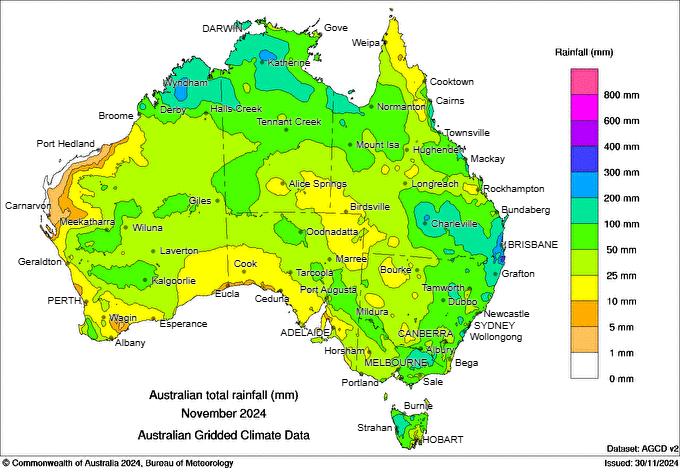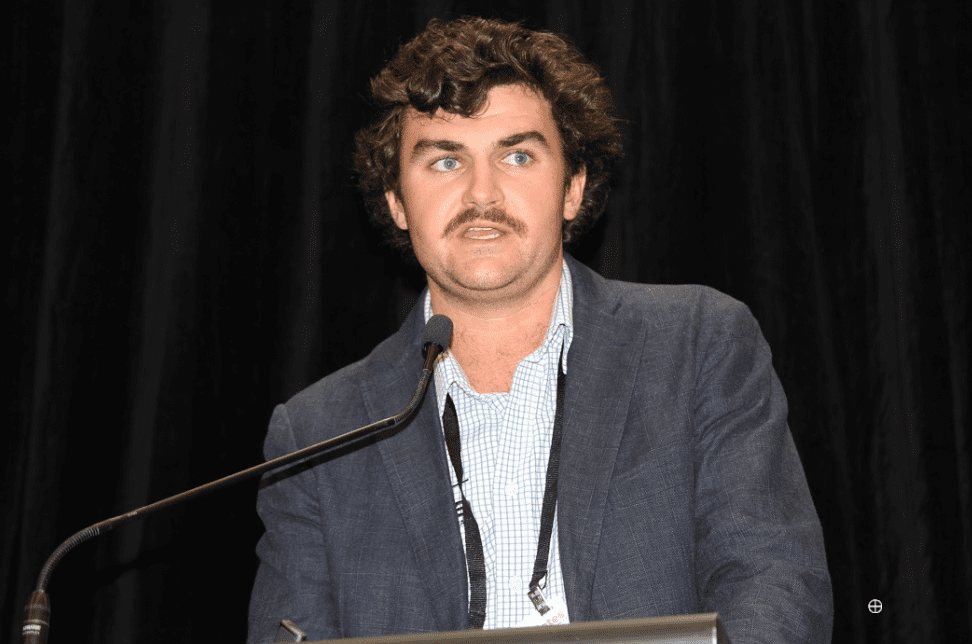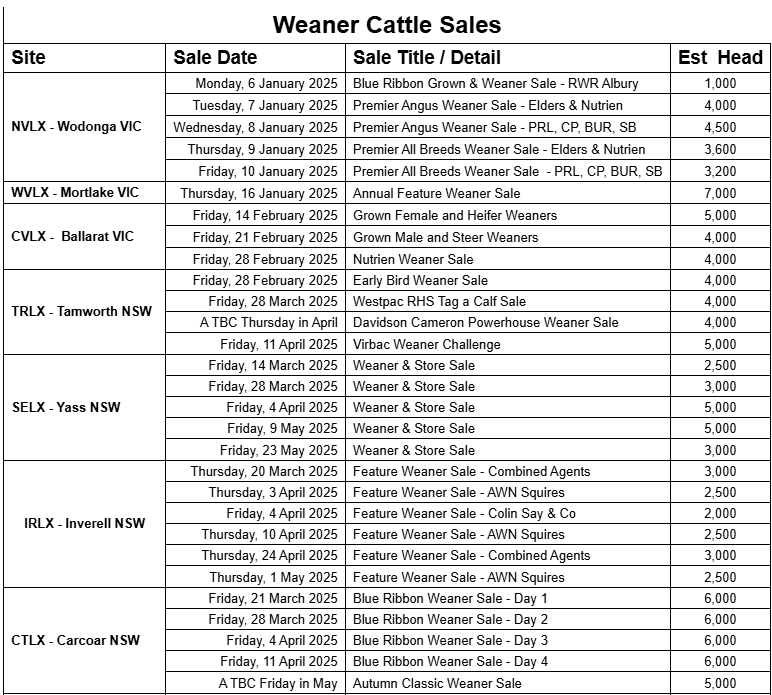A STRONG northern presence is expected at the early southern Australian weaner sales from January next year after a good start to the season in Queensland and New South Wales.
About 129,000 head are expected to pass through Regional Livestock Exchange saleyards across New South Wales and Victoria for weaner sales in the first half of the year.
With dry weather persisting in Victoria, South Australia and Southern NSW this year, many were expecting weaners to be about 50kg lighter that they were at sales last year. However, RMA network chief executive officer and Beef Central columnist Chris Howie said some recent patchy rain has put a few more kilograms on.
“We are probably about 20-30kg lighter this year compared to last year, which is not a bad thing considering the demand is there,” Mr Howie said.
As this week’s cricket test at Brisbane’s Gabba ground clearly demonstrated, the Sunshine State has seen storms passing for most of the week, with big falls on the east coast and patchy storms on the Darling Downs.
It follows what has been a good early start to the season for Northern NSW and Southern Qld, with Meat & Livestock Australia’s benchmark Eastern Young Cattle Indicator jumping about 50c since the start of the month – opening this week at 685c/kg carcase weight.
While feedlots in rain-impacted areas trying to fill pens has played a significant role in the increase in the EYCI, Northern restocker buyers have been present in Southern NSW and Victorian saleyards in recent weeks, which has also pushed prices up.
Patchy rain has fallen in dry parts of Victoria and South Australia in the past month, however, some cattle that would traditionally go into the early weaner sales have evidently been brought onto the market in November and December to capture the uptick in demand and get stock off dry paddocks.
Mr Howie said prices for crossbred and British cattle in the south had pushed up, relative to Angus, in the past two months.
“If you go back a month ago, you could still buy good calves between 365c/kg and 375c/kg, but you can’t get them for that anymore – the calves are still there but the price has gone up,” he said.
“The top end price hasn’t pushed up, but bottom has lifted and there are more people hunting in that 380-420c/kg range.
“Everyone is mindful of what they can sell them for and that 420c/kg mark seems to be the point where there will be some resistance.”
Transport costs to come into consideration
StoneX Australian livestock and commodities manager Ripley Atkinson said while plenty of northern buyers were expected, they were unlikely to have much competition from the south.
“You will definitely see that Northern presence and they will probably be competing in a marketplace with a little less competition from grassfed bullock producers in areas like Gippsland and general traders and backgrounders out of the south,” Mr Atkinson said.
“It is quite dry down there and I don’t think they will want to risk doing a trade on these light cattle without having the feed at the minute – I am happy to be proven wrong though.
Mr Atkinson said he was expecting many buyers from a north will have a limit to what they will pay.
“Freight I think will come into the northern buyers’ calculations, it is not cheap to get cattle home, it is a good discount at the minute but I think they will go down there with the cheque book and have a price limit and be walking past pens if they can’t get the numbers right,” he said.
“I can’t see it being manic or a free-for-all like the start of 2022, I think you will see similar trends to the start this year.
“The other question is, are Queensland buyers prepared to take the risk of buying those softer southern cattle and bringing them up north in the middle of summer? I think that might come into calculations too.”
Activity picking up with livestock financiers
As NSW producer Nigel Kerin pointed out in this article last week, 2024 has been a tough year for the specialist livestock financiers. Many of them suffered big losses last year when the market crashed and have struggled to lend out credit.
However, with the latest burst in rain and a relatively positive market outlook, activity is starting to pick up with the livestock lenders.
Legacy Livestock managing director Richard Brimblecombe said the last two months had been the busiest since the company started in 2022.
“We are seeing confidence returning to the market, people are looking to take advantage of opportunities. Up until a couple of months ago, producers were very hesitant to step into the market,” Mr Brimblecombe said.
“Now there is some stability in the market and they have the feed in front of them, we are certainly seeing a real uptick in inquiries.”
A similar situation was playing out with livestock financier StockCo, with Wagga Wagga-based livestock manager Andrew Kearns saying many had been setting up lending facilities in anticipation for the weaner sales.
“The last two months have really kicked off, harvest has finished and a lot of people are buying lambs and young steers to throw onto stubble,” he said.
“There is a lot of noise that these weaners are going to get to 500c/kg, so I think people are getting facilities in place so if they need, then they can use them and if they don’t need them then no harm done.”
RLX weaner sales 2025
- To get a full list of upcoming sales from the RMA network click here

